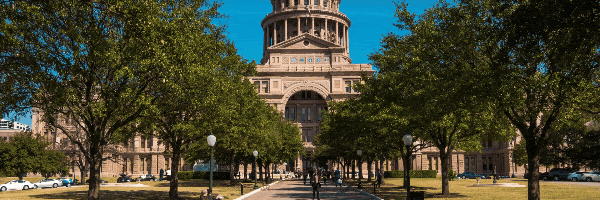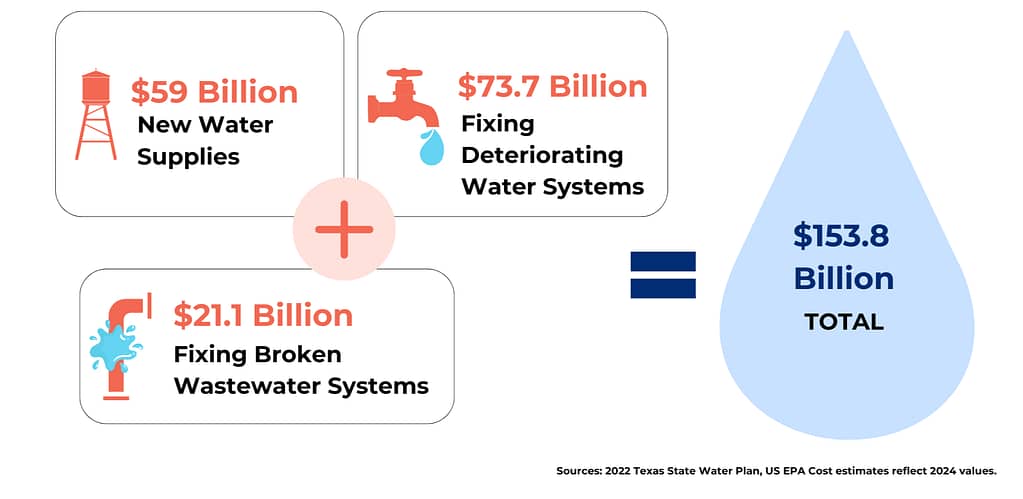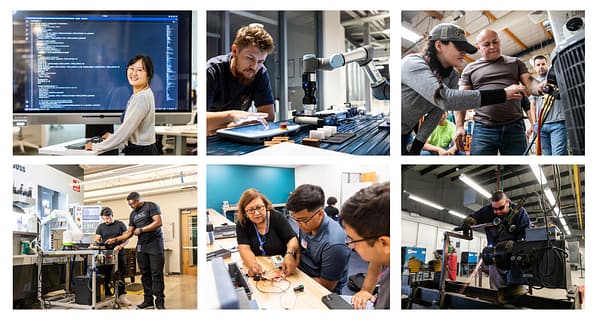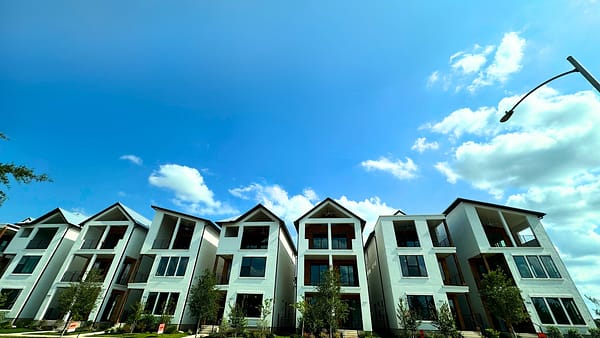Inside the 89th TXLege: What passed, what’s next
This is a preview of our Texas 2036 newsletter with what passed this legislative session and what’s next. To receive this weekly look at our work, sign up here.
What we backed: Our priorities for Texas’ future

With the Legislature wrapping up last week and the Governor reviewing recently passed bills, Texas 2036 is reflecting on what state leaders achieved to improve Texans’ lives.
Legislature takes next step for our water future

Our biggest challenge: Texas must invest at least $154 billion over the next 50 years to upgrade aging water systems and meet the needs of our growing population. Without action, prolonged drought could cost the state $165 billion in GDP each year by 2050.
What did TXLege do? Lawmakers took a key step by creating a long-term funding strategy for the Texas Water Fund, which was created in 2023 to modernize infrastructure and develop new water supplies.
 What’s next? Texas voters will be asked in November to approve the constitutional dedication of sales tax revenue to the Texas Water Fund. This would represent a 20-year, $20 billion investment to secure the Texas economic miracle.
What’s next? Texas voters will be asked in November to approve the constitutional dedication of sales tax revenue to the Texas Water Fund. This would represent a 20-year, $20 billion investment to secure the Texas economic miracle.
More: Investing in Texas’ Water Future
Making Texas more resilient to wildfires
Last year, Texas endured its largest wildfire in recorded history. The Panhandle Wildfires burned over 1.2 million acres and caused nearly $125 million in economic losses.
Research from the Office of the State Climatologist at Texas A&M University shows wildfire seasons are expected to grow longer, with more areas of the state at risk. Data from the First Street Foundation reveals that nearly 9 million properties (70% of all in Texas) face wildfire risk over the next 30 years.
 What did TXLege do? Lawmakers appropriated over $600 million to bolster wildfire preparedness and response. They also passed legislation to equip firefighters with better gear and stronger communication tools, which are critical support for those on the frontlines.
What did TXLege do? Lawmakers appropriated over $600 million to bolster wildfire preparedness and response. They also passed legislation to equip firefighters with better gear and stronger communication tools, which are critical support for those on the frontlines.
More: Protecting Texas from Wildfires
Students need more paths to good paying jobs

Source: The University of Texas at El Paso, College of Nursing
More than six in 10 jobs require a degree or credential, but only 36% of Texas high school graduates earn one within six years.
Texas must expand access to workforce credentials in high school so students who choose not to attend college can still step into strong, career-ready jobs after graduation.
 What did TXLege do? Lawmakers invested millions to expand career-aligned high schools, especially in rural areas, and realigned public education goals to better prepare students for life after graduation.
What did TXLege do? Lawmakers invested millions to expand career-aligned high schools, especially in rural areas, and realigned public education goals to better prepare students for life after graduation.
More: From the High School Classroom to a Good Career and Economic Mobility
Investing in high-quality literacy, math education
Only 46% of Texas third graders are reading at grade level, and just 40% are on track in math. Once students fall behind, catching up becomes increasingly difficult.
If a child isn’t on grade level by third grade, their odds of catching up are slim. Too many children are missing the strong foundations in reading and math they need for long-term success.
Research consistently shows that early literacy is a critical predictor of academic achievement, while strong math achievement is closely linked to higher lifetime earnings.
 What did TXLege do? Lawmakers took the following actions:
What did TXLege do? Lawmakers took the following actions:
- Required additional numeracy training for our K-3 math teachers.
- Required school districts to identify K–3 students struggling in math or reading and notify parents.
- Increased pay for experienced teachers and expanded the program that allows our best teachers to make a six-figure salary.
By the 2029-30 school year, every core subject teacher is required to be certified. Lawmakers provided incentives for teachers to pursue certification through high-quality programs.
More: Strong Academic Foundations
Credentials: A step toward high-value careers

Source: Austin Community College
With the passage of House Bill 8 in 2023, the Legislature took key steps to strengthen Texas’ community college system and better prepare students for high-demand, high-wage jobs.
The bill established the first outcomes-based funding model of its kind, positioning Texas as a national leader in aligning higher education with student success and workforce needs.
 What did TXLege do? Building on HB 8’s success, lawmakers this session passed Senate Bill 1786 to advance outcomes-based funding.
What did TXLege do? Building on HB 8’s success, lawmakers this session passed Senate Bill 1786 to advance outcomes-based funding.
The bill gives all 50 community colleges access to better data and helps ensure credentials lead to real job opportunities aligned with workforce needs.
More: From Credentials to Careers
Tackling prison recidivism through education

Source: Texas Dept. of Criminal Justice and Windham School District
Higher education is one of the most effective tools for reducing recidivism but for years, it has been underutilized in Texas prisons.
A 2024 report from the Sunset Advisory Commission found that the Texas Department of Criminal Justice lacked the data and infrastructure to effectively manage postsecondary programs.
Enrollment dropped by 50% between 2011 and 2021, and as of April 2024, incarcerated Texans on waitlists outnumbered those enrolled four-to-one in associate and bachelor-level programs.
 What did TXLege do? Legislation to extend the Texas prison oversight agency included provisions to:
What did TXLege do? Legislation to extend the Texas prison oversight agency included provisions to:
- Transfer the coordination of higher education program to the Windham School District and establish an advisory board to support program management.
- Align offerings with workforce demands to support success after release.
More: Prison Higher Education
TXLege works toward health care affordability

The average family premium for employer-sponsored insurance in Texas now tops $25,000, almost one-third of the state’s median household income.
One in three Texans, and over half of Texas moms, have skipped care because they couldn’t find out what it would cost beforehand.
Lack of price transparency is a barrier to care, and it’s costing Texans.
What did lawmakers do this session to address this?
They made major strides to help Texans get more value from their health care:
- They fully funded the All-Payor Claims Database (APCD), a tool that tracks health care cost trends and identifies savings opportunities.
- They expanded the APCD’s use, allowing evaluations of changes to the Employees Retirement System and Teacher Retirement System.
- They empowered insurers to promote high-value care, letting them vary copays and deductibles to steer patients toward low-cost, high-quality providers, while also establishing a fiduciary duty to prevent self-dealing.
 The big takeaway:
The big takeaway:
These reforms aim to give Texans more clarity, better choice and stronger protections in an increasingly expensive health care landscape.
More: Health Care Affordability
Building a better future for Texas childcare
Texans have told us time and again: it’s getting harder to find affordable childcare. Beyond the everyday challenges this creates for families, the lack of quality childcare options comes with a steep cost.
Studies estimate that Texas loses up to $11.4 billion each year in productivity and revenue due to childcare-related issues impacting parents, businesses and taxpayers.
 What the Texas Lege did:
What the Texas Lege did:
Through key bills, lawmakers took important steps to improve childcare coordination statewide:
- They established a framework for childcare data sharing across state agencies.
- They created the Quad-Agency Child Care Initiative, bringing together four state agencies to coordinate efforts and improve services.
Together, these measures lay the groundwork for better data, stronger coordination and long-term solutions to improve childcare access and quality across Texas.
More: Laying the Foundation for Long-term Child Care Reform
A blueprint to build more homes

Homeownership is the primary way most families build wealth. The median homeowner’s net worth is nearly 40 times that of the median renter, but costs are now at their highest in decades.
From 2020 to 2024, the income needed to buy a median-priced home rose over 30% to $100,629.
Rising home prices are a supply issue: The state needs an estimated 320,000 additional housing units to meet Texans’ needs.
 This session, lawmakers took action:
This session, lawmakers took action:
- They reformed the 100-year-old “tyrant’s veto” rule, limiting the power of small groups to block new developments.
- They made it easier to build single-family homes on smaller lots.
- They rolled back prohibitions on single-stair apartment buildings, expanding options for multi-family housing.
More: Improving Housing Affordability
Strengthening Texas’ data infrastructure
Texas can’t solve tomorrow’s challenges with yesterday’s systems. A wave of legislation focused on technology, accountability and adaptive services signals an important shift: Texas is building an efficient and future-ready government.
Key actions this session included:
- Adding a mid-cycle review to each 12-year Sunset process, improving how state agencies set and track goals.
- Creating the Texas Cyber Command at UT San Antonio, tapping into the region’s cybersecurity talent to defend against emerging threats.
- Investing $54.5 million to replace the outdated case management system at the Department of Family and Protective Services.
- Launching the Texas Quantum Initiative to position the state as a leader in quantum computing.
 The big takeaway:
The big takeaway:
These reforms reflect a commitment to building state systems that are not only efficient but also resilient, secure and forward-looking.
More: Strengthening Texas’ Digital Infrastructure
We want to hear from you.
What grade would you give lawmakers for their work this session?
Let us know your thoughts.
